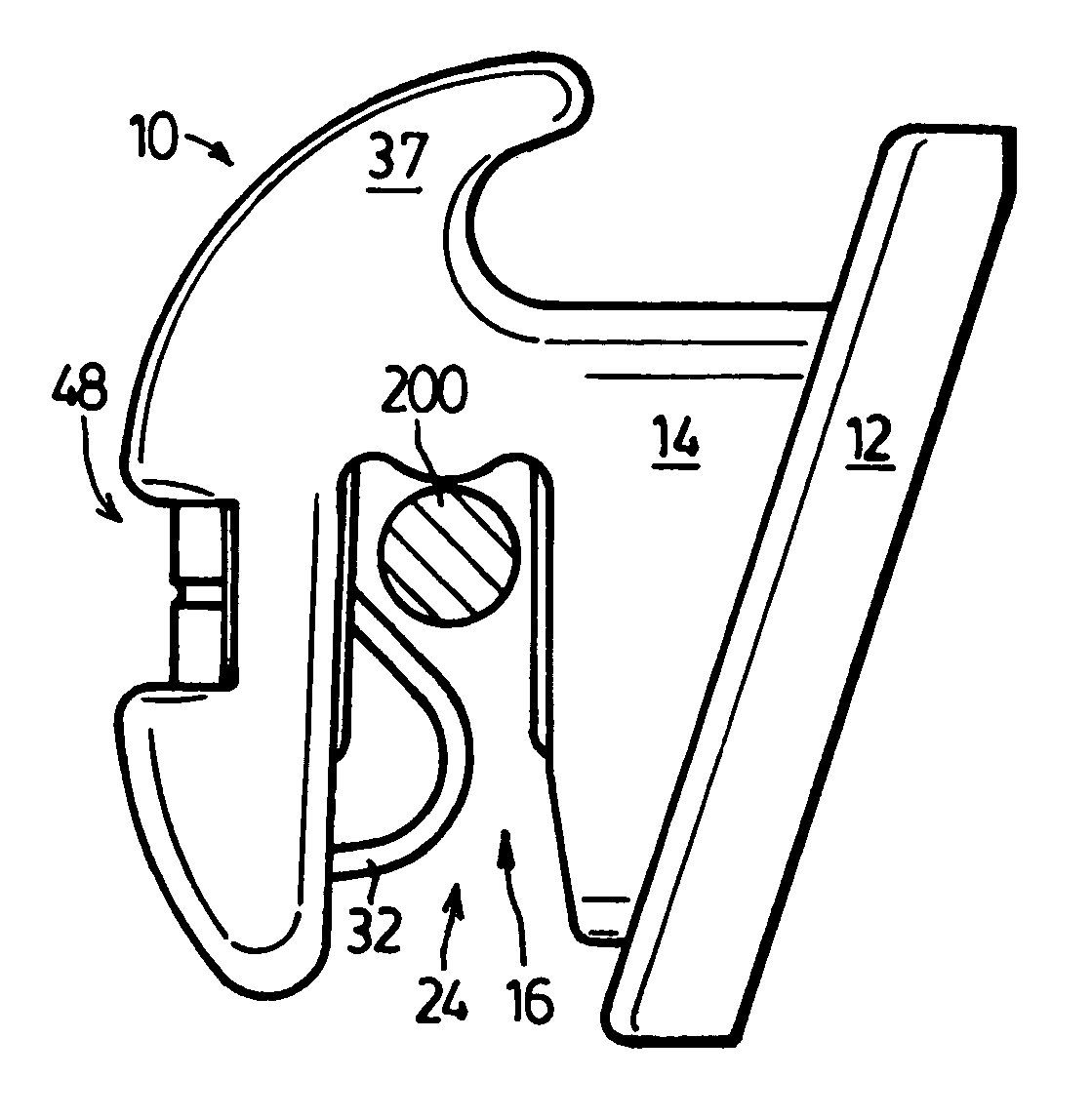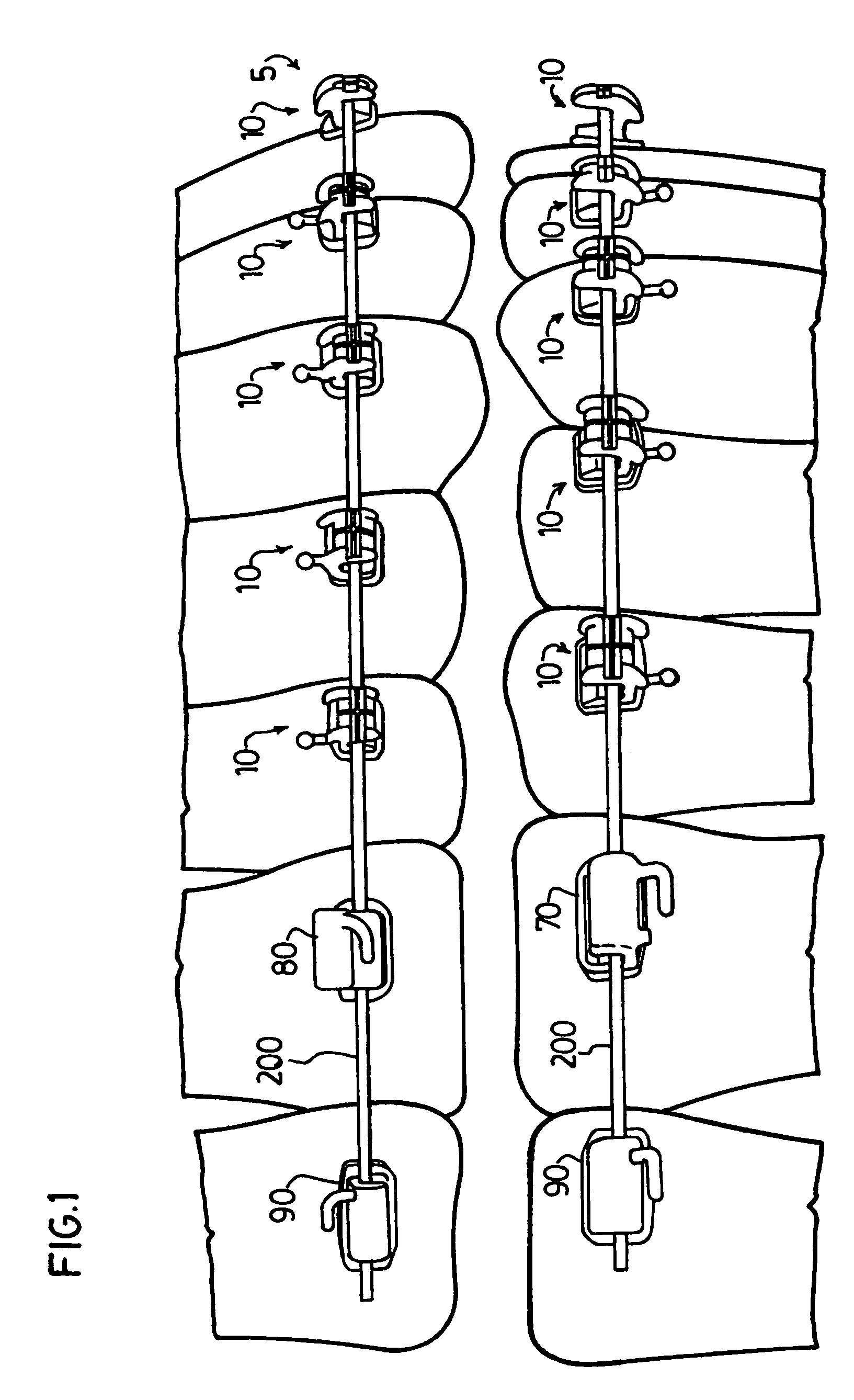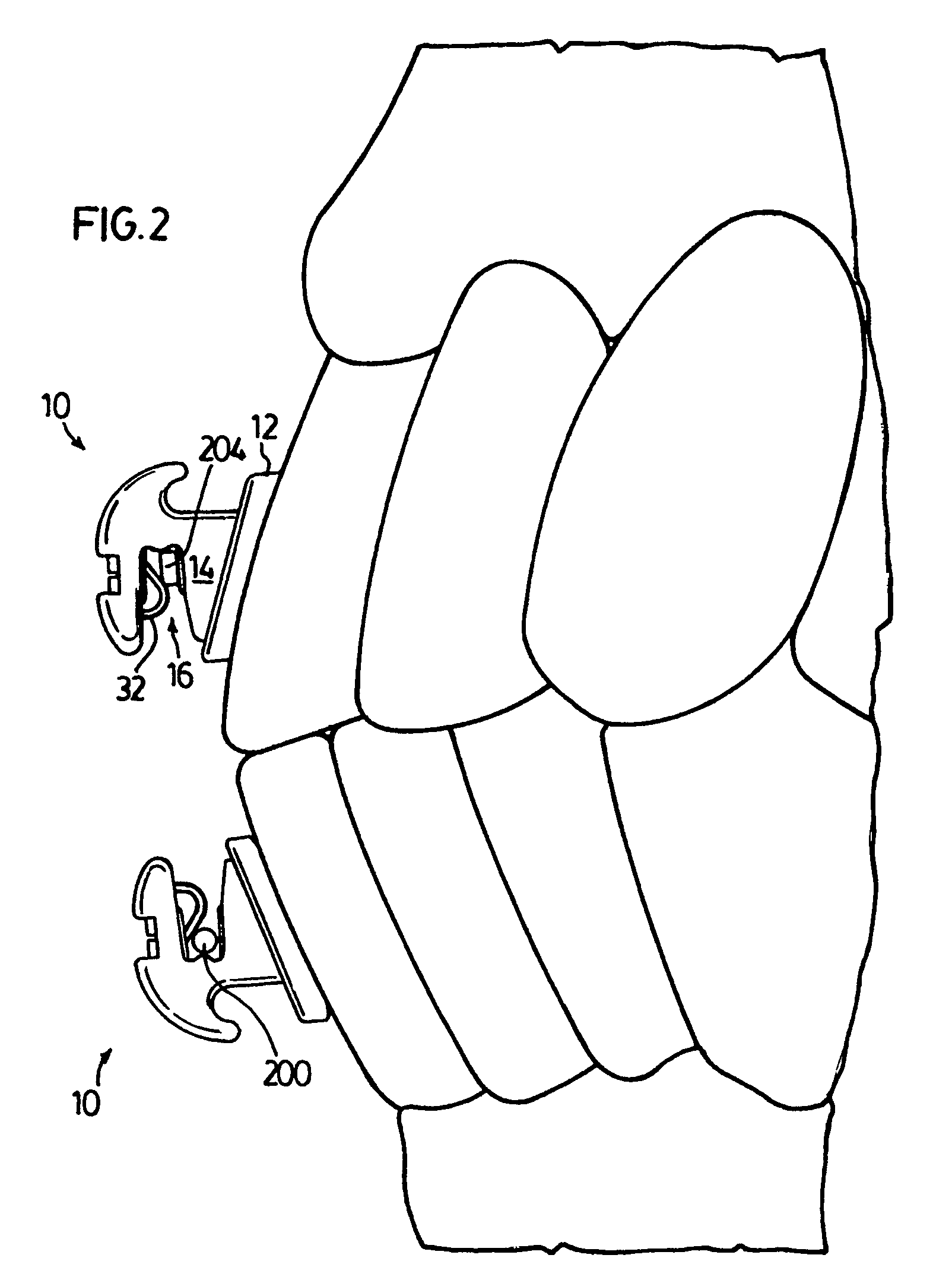Orthodontic bracket system
a bracket system and orthodontic technology, applied in the field of applications, can solve the problems of increasing the risk of infection, irritating cheek and gum tissue, and ligatures can suffer from force decay and staining, and achieve good control over the movement of the appliance and the associated tooth
- Summary
- Abstract
- Description
- Claims
- Application Information
AI Technical Summary
Benefits of technology
Problems solved by technology
Method used
Image
Examples
Embodiment Construction
[0068]Referring to the drawings, FIG. 1 is a side elevational view of a ribbon arch self-ligating bracket system 5 provided in accordance with one embodiment of the present invention. System 5 is comprised of brackets for anterior and posterior teeth on both the upper and lower arch, linked with a ribbon archwire.
[0069]FIG. 2 is an enlarged partial side-elevational view of the bracket system of FIG. 1 showing brackets 10 on the upper and lower incisor. FIGS. 3 to 9 show bracket 10 from various angles, both with and without inserted archwires.
[0070]Bracket 10 comprises a base 12 and a body 14 extending from the base 12 in a buccal / labial direction. Base 12 is adapted to face and be bonded to a patient's tooth in a known manner, such as a mesh bonding pad, or an integral base.
[0071]An archwire slot 16 extends across body 14 in a generally mesial-distal direction. Archwire slot 16 is bounded on three sides by a buccal / labial wall 18, a lingual wall 20, and a gingival wall 22. Archwire ...
PUM
 Login to View More
Login to View More Abstract
Description
Claims
Application Information
 Login to View More
Login to View More - R&D
- Intellectual Property
- Life Sciences
- Materials
- Tech Scout
- Unparalleled Data Quality
- Higher Quality Content
- 60% Fewer Hallucinations
Browse by: Latest US Patents, China's latest patents, Technical Efficacy Thesaurus, Application Domain, Technology Topic, Popular Technical Reports.
© 2025 PatSnap. All rights reserved.Legal|Privacy policy|Modern Slavery Act Transparency Statement|Sitemap|About US| Contact US: help@patsnap.com



